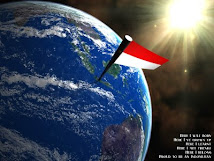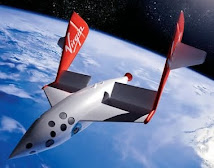"Hukum-Hukum Astro Dinamika Akan Menjadi Dasar Bagi Pengembangan IPTEK Antariksa Masa Depan Umat Manusia"
*Arip Nurahma*
The fundamental laws of astrodynamics
are Newton's law of universal
gravitation and Newton's laws of motion, while the
fundamental mathematical tool is his differential calculus.
Standard assumptions in
astrodynamics include non-interference from outside bodies,
negligible mass for one of the bodies, and negligible other forces (such
as from the solar wind, atmospheric drag, etc.). More accurate
calculations can be made without these simplifying assumptions, but they
are more complicated. The increased accuracy often does not make enough
of a difference in the calculation to be worthwhile.
Kepler's laws of planetary
motion may be derived from Newton's laws, when it is assumed that
the orbiting body is subject only to the gravitational force of the
central attractor. When an engine thrust or propulsive force is present,
Newton's laws still apply, but Kepler's laws are invalidated. When the
thrust stops, the resulting orbit will be different but will once again
be described by Kepler's laws. The three laws are:
- The orbit of every planet is an ellipse with the sun at one of the foci.
- A line joining a planet and the sun sweeps out equal areas during equal intervals of time.
- The squares of the orbital periods of planets are directly proportional to the cubes of the semi-major axis of the orbits.
Escape velocity
The formula for escape velocity is easily derived as follows. The specific energy (energy per unit mass) of any
space vehicle is composed of two components, the specific potential energy and the specific kinetic energy. The specific potential energy associated
with a planet of mass M is given by

while the specific kinetic energy of an object
is given by

Since energy is conserved, the total specific orbital energy

does not depend on the distance, r, from the center of the central body to
the space vehicle in question. Therefore, the object can reach infinite r only if this quantity is nonnegative,
which implies

The escape velocity from the Earth's
surface is about 11 km/s, but that is insufficient to send the body an
infinite distance because of the gravitational pull of the Sun. To
escape the solar system from the vicinity of the Earth requires around
42 km/s velocity, but there will be "part credit" for the Earth's
orbital velocity for spacecraft launched from Earth, if their further
acceleration (due to the propulsion system) carries them in the same
direction as Earth travels in its orbit.
Formulae for free orbits
Orbits are conic
sections, so, naturally, the formula for the distance of a body for
a given angle corresponds to the formula for that curve in polar coordinates, which is:
 .
.
The
parameters are given by the orbital elements.
Circular orbits
Although most orbits are elliptical in
nature, a special case is the circular orbit, which is an ellipse of
zero eccentricity. The formula for the velocity of a body in a circular
orbit at distance r from the center of gravity of mass M
is
where
G is the gravitational constant, equal to
- 6.672 598 × 10−11 m3/(kg·s2)
To
properly use this formula, the units must be consistent; for example, M
must be in kilograms, and r must be in meters. The answer will
be in meters per second.
The quantity GM is often termed
the standard gravitational
parameter, which has a different value for every planet or moon in
the solar
system.
Once the circular orbital velocity is
known, the escape velocity is easily found by
multiplying by the square root of 2:





















